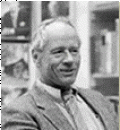Medical history
The famous journalist was arrested for stowing away on a hospital ship to cover the action on Normandy, writing a more compelling article than did her husband, Ernest Hemingway.
Some New England graveyards show evidence of rituals performed to ward off bloodthirsty murderers.
Rush was a visionary writer and reformer, a confidant to John Adams, Washington's surgeon general, and opponent of slavery and prejudice, yet he's not a well-known founding father.
Stalwart as he was, the general was often ill. A doctor studies his record and notes shortcomings in Eighteenth-Century medical care.
Cosmetic surgery was born 2500 years ago and came of age in the inferno of the Western Front. The controversy about it is still growing.
In the past hundred years, psychiatry has come full circle: Psychoanalysis lost; medicine won.
In a hard war, theirs may have been the hardest job of all. Along with Army doctors and nurses, they worked something very close to a miracle in the European theater.
TODAY, NEARLY HALF a million men and women serve two-thirds of the country in a crucial volunteer service that began only recently, and only because a nine-year-old boy had witnessed a drowning.
Everyone knows that the bullet that John Wilkes Booth fired into Abraham Lincoln’s brain inflicted a terrible, mortal wound. But when a prominent neurosurgeon began to investigate the assassination, he discovered persuasive evidence that Lincoln’s doctors must share the blame with Booth’s derringer. Without their treatment, the president might very well have lived.
America looked good to a high school senior then, and that year looks wonderfully safe to us now, but it was a time of tumult, and there were plenty of shadows, along with the sunshine.
In the past 70 years, while several major diseases have been eradicated, one has risen from obscurity to take its place among the nation’s leading killers.
As modern medicine has grown ever more powerful, our ways of providing it and paying for it have gotten ever-more-wasteful, unaffordable, and unfair. Here is an explanation and a possible first step toward a solution.
With its roots in the medically benighted eighteenth century, and its history shaped by the needs of the urban poor, Bellevue has emerged on its 250th anniversary as a world-renowned center of modern medicine
In a classic medical paper, Dr. Reginald Fitz identified the disease, named it, showed how to diagnose it, and prescribed an operation that would save tens of millions of lives.
How our wartime experience conquered a wide range of problems from hemorrhagic shock to yellow fever
How a favorite local charity of Boston’s Brahmins—parochial and elite—grew into one of our great democratic medical institutions
Americans have never been so healthy, thanks to advances in medical technology and research. Now we have to learn to deal with the staggering costs.
American medicine in a crucial era was at once surprisingly similar and shockingly different from what we know today. You could get aspirin at the drugstore, and anesthesia during surgery. But you could also buy opium over the counter, and the surgery would be more likely to be performed in your kitchen than in a hospital.
“A wound in the heart is mortal,” Hippocrates said two thousand years ago. Until very recently he was right.
THE HUNDRED-YEAR WAR AGAINST THE CIGARETTE
The Hundredth Anniversary of the American Red Cross
The Father of Psychoanalysis came, saw, conquered—and didn’t like it much
The single greatest medical discovery of the last century began as a parlor game, and brought tragedy to nearly everyone who had a hand in it
A young girl’s memories of life in a community haunted by
Today’s city, for all its ills, is “cleaner, less crowded, safer, and more livable than its turn-of-the-century counterpart,” argues this eminent urban historian. Yet two new problems are potentially fatal. …
How a Crash Program Developed an Efficient Oral Contraceptive in Less Than a Decade





